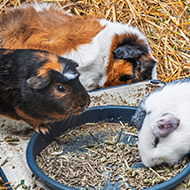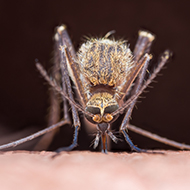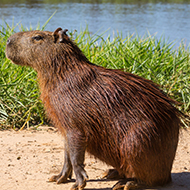"Orangutans may be aware that they can influence their call and it changes the reaction of the predator."
Discovery could be the first hint that an animal can learn to modify sound
Orangutans cup their hands around their muzzles to sound bigger, according to a study published in The Journal of Experimental Biology.
The discovery could be the first hint that an animal can learn to modify sound, the researchers say.
The behaviour was observed deep in the rain forests of Sumatra and Borneo.
"Orangutans make these ‘kiss-squeak’ alarm calls if humans and dangerous animals come near", explains lead author Bart de Boers from the Vrije Universiteit Brussel, Belgium.
But when biologists Madaleine Hardus from the Pongo Foundation and Adriano Lameira and Serge Wich from the University of Amsterdam first discovered the threatening sound, they noticed that some orangutans cupped their hands around their muzzles to make their calls sound deeper, therefore making them seem larger, in order to warn off predators.
Bart de Boer's study sought to help the biologists find out whether the animals were really modifying their alarm calls to create a false impression.
He built two mathematical models - one to understand the sound production mechanism, and another to simulate the frequency signature - to learn more about how the apes deepen the alarm sound.
He discovered that through channeling sound through the hand and face cavity - like the sound of a box instrument- the ape was effectively lengthening the pipe structure to lower the sound's pitch and make it deeper.
Through his second model, to test whether a lower pitch would make an animal sound larger, de Boer also learnt that the lower overtones were amplified in the simulation when the hand was in place.
The researchers say that the study could be the first hint that an animal can learn to modify sound, which is an essential tool for language acquisition.
"Orangutans may be aware that they can influence their call and it changes the reaction of the predator," de Boer said. "This a simple form of learning, which is a very important first step in language."
The study, Acoustic models of orangutan hand-assisted alarm calls, is published in The Journal of Experimental Biology.
Image (C) Bjorn Christian Torrissen







 Zoetis has launched a new survey to identify management techniques for Equine Herpes Virus (EHV).
Zoetis has launched a new survey to identify management techniques for Equine Herpes Virus (EHV).
